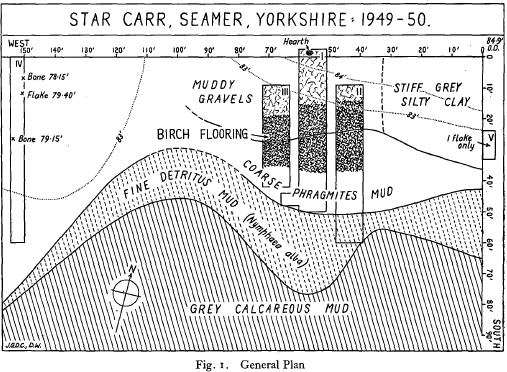Article contents
Preliminary Report on Excavations at Star Carr, Seamer, Scarborough, Yorkshire (Second Season, 1950)
Published online by Cambridge University Press: 27 May 2014
Extract
The first season's digging at Star Carr, Seamer, was confined to the examination of a single cutting and a lateral extension from this, the whole area amounting to no more than 475 square feet. The second season's work carried out in June and July 1950 was aimed first and foremost at learning more about the character of the brushwood flooring revealed in 1949 and in increasing the range of data bearing on the culture of the mesolithic hunters and on the wild animals on which they subsisted. Cuttings (II and III) were accordingly opened on either side of the original one, but three-foot balks were retained so as to prevent loose peat and water pouring from the original cutting into the new workings (fig. 1). The width of cuttings II and III was maintained at three yards so that the peat overlying the archaeological level could be dumped without harrowing. The new cuttings were started three yards south of datum, in view of what had been learnt in the previous season about the limits within which organic materials survived. Cutting II was extended southward well out into the lake bed, but cutting III was not carried out so far owing to the seepage of water from the lateral extension from the original cutting. The total area examined in cuttings II and III was approximately 747 square feet.

- Type
- Research Article
- Information
- Copyright
- Copyright © The Prehistoric Society 1950
References
REFERENCES
BIBLIOGRAPHY
- 6
- Cited by




